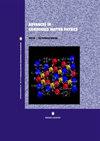一种具有多谐振腔的新型振动抑制弹性超材料
IF 1.8
4区 物理与天体物理
Q3 PHYSICS, CONDENSED MATTER
引用次数: 1
摘要
本文提出了包含一个谐振腔和两个谐振腔的两种弹性超材料模型来获得带隙,目的是提供宽带振动抑制。该模型由多个单元单元组成,每个单元单元由一个矩形框架作为基础结构和一个齿条-小齿轮机构组成,齿条-小齿轮机构两侧用线性弹簧连接在框架上。在二自由度模型中,加入一个小质量,其中心一端附着在小齿轮的中心,另一端通过线性弹簧连接到矩形框架上。在第一种机构中,小齿轮被认为是单谐振器,而在二自由度模型中,小齿轮和小质量被认为是多谐振器。通过获得每个模型中单个单元的运动控制方程,深入研究了两个元结构的动力学行为。因此,将两种模型的运动方程写成矩阵形式,然后给出色散关系,分析系统参数对带隙起始/结束频率的影响。最后通过MATLAB-SIMULINK和MSC-ADAMS软件对两种模型进行了成功的比较和数值模拟。借助启动/结束频率的封闭表达式,可以很容易地识别系统参数与带隙间隔之间的相关性。本文章由计算机程序翻译,如有差异,请以英文原文为准。
A Novel Elastic Metamaterial with Multiple Resonators for Vibration Suppression
In this paper, two models of elastic metamaterial containing one and two resonators are proposed to obtain the bandgaps with the aim of providing broadband vibration suppression. The model with one DOF is built by assembling several unite cells in which each unite cell consists of a rectangular frame as the base structure and a rack-and-pinion mechanism that is joined to the frame with a linear spring on both sides. In the second model with two DOF, a small mass is added while its center is attached to the center of the pinion on one side and the other side is connected to the rectangular frame via a linear spring. In the first mechanism, the pinion is considered as the single resonator, and in the 2DOF model, on the other hand, the pinion and small mass acted as multiple resonators. By obtaining the governing equations of motion for a single cell in each model, the dynamic behavior of two metastructures is thoroughly investigated. Therefore, the equations of motion for the two models are written in matrix form, and then, the dispersion relations are presented to analyze the influences of system parameters on the bandgaps’ starting/ending frequencies. Finally, two models are successfully compared and then numerically simulated via MATLAB-SIMULINK and MSC-ADAMS software. With the aid of closed-form expressions for starting/ending frequencies, the correlation between the system parameters and bandgap intervals can be readily recognized.
求助全文
通过发布文献求助,成功后即可免费获取论文全文。
去求助
来源期刊

Advances in Condensed Matter Physics
PHYSICS, CONDENSED MATTER-
CiteScore
2.30
自引率
0.00%
发文量
33
审稿时长
6-12 weeks
期刊介绍:
Advances in Condensed Matter Physics publishes articles on the experimental and theoretical study of the physics of materials in solid, liquid, amorphous, and exotic states. Papers consider the quantum, classical, and statistical mechanics of materials; their structure, dynamics, and phase transitions; and their magnetic, electronic, thermal, and optical properties.
Submission of original research, and focused review articles, is welcomed from researchers from across the entire condensed matter physics community.
 求助内容:
求助内容: 应助结果提醒方式:
应助结果提醒方式:


